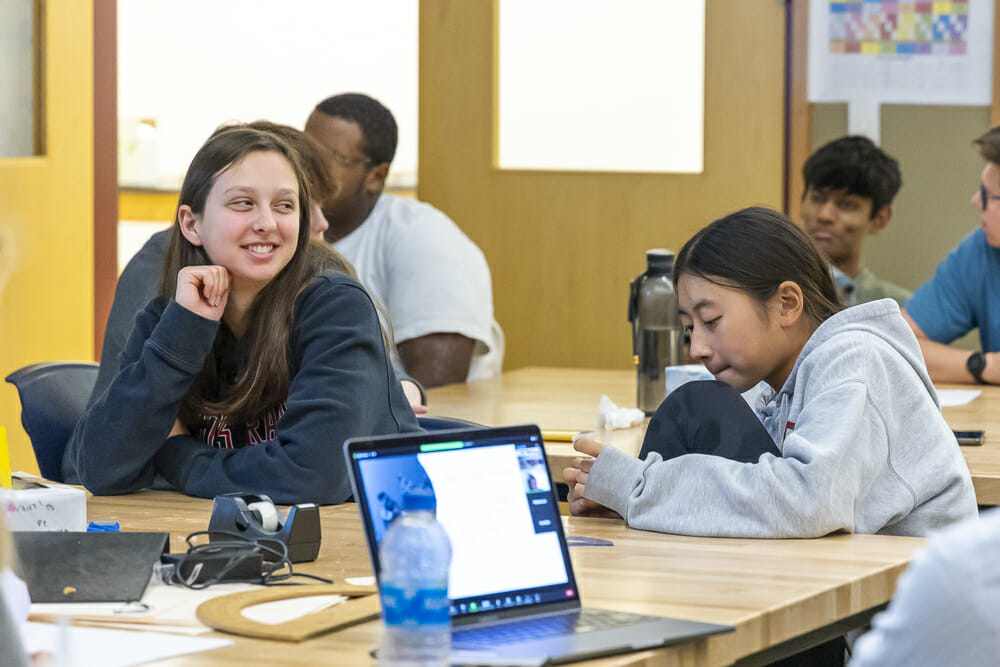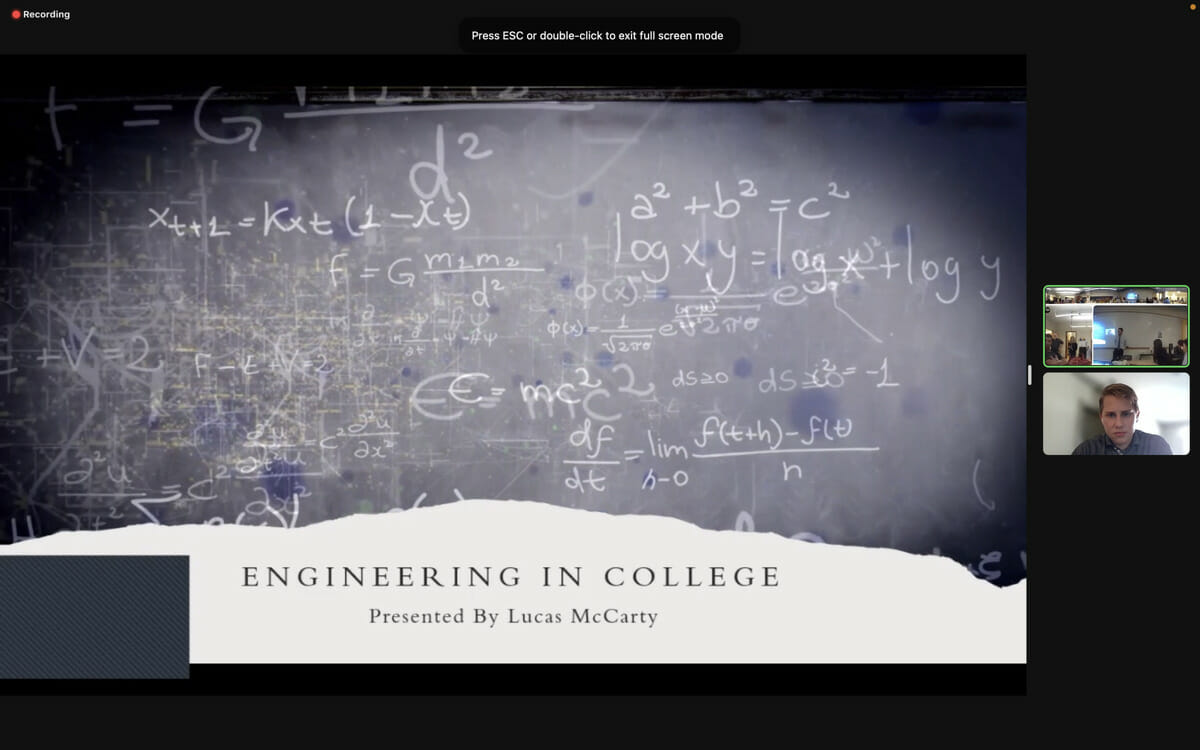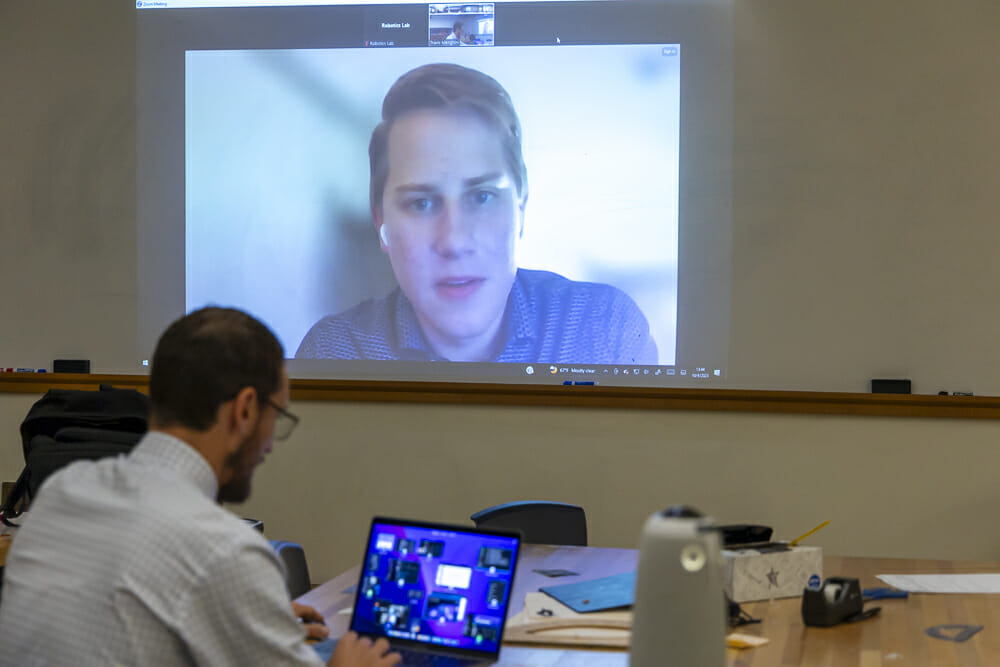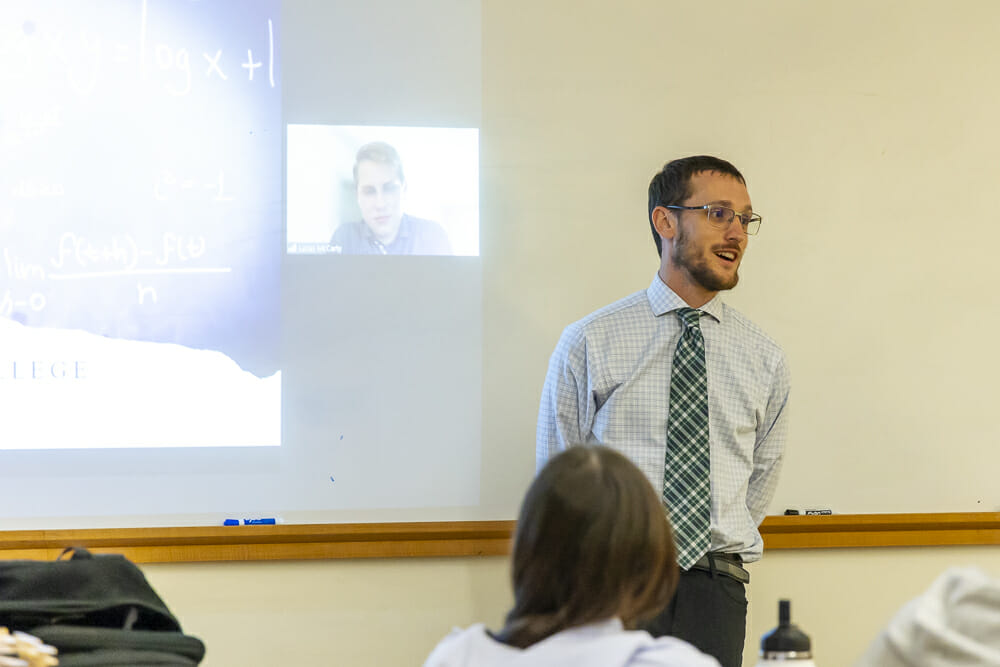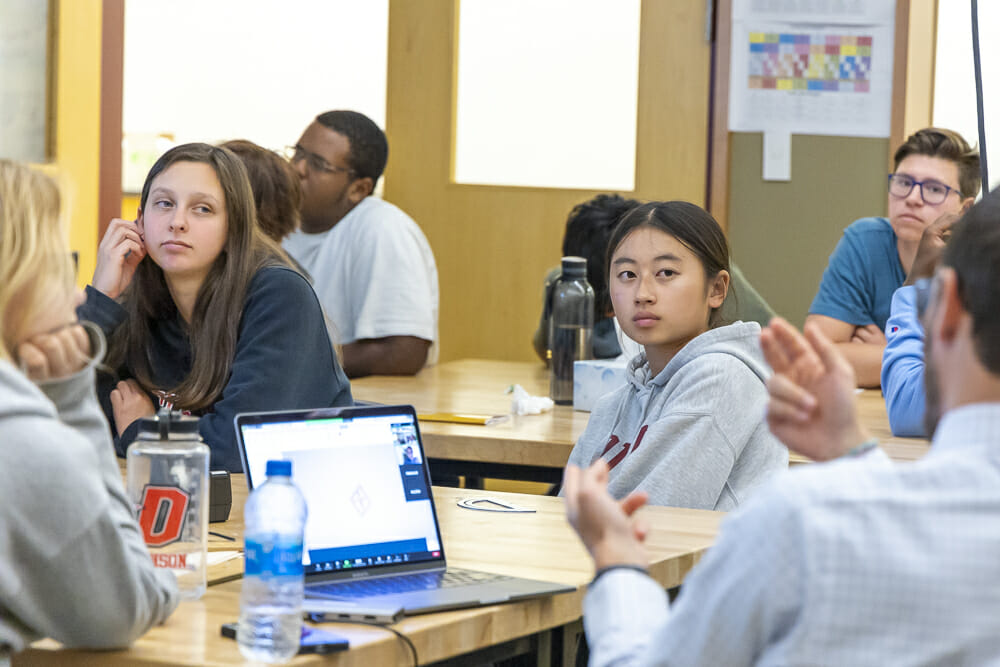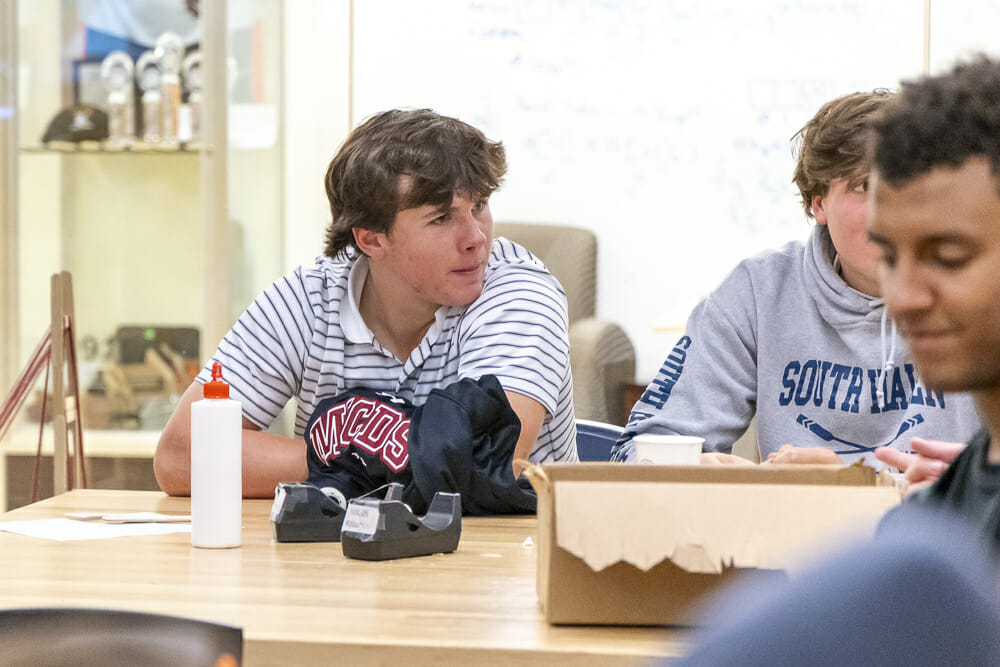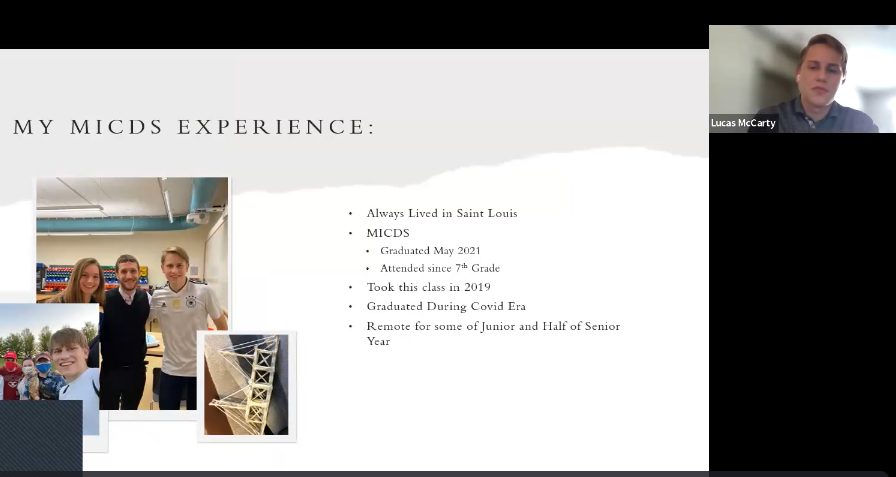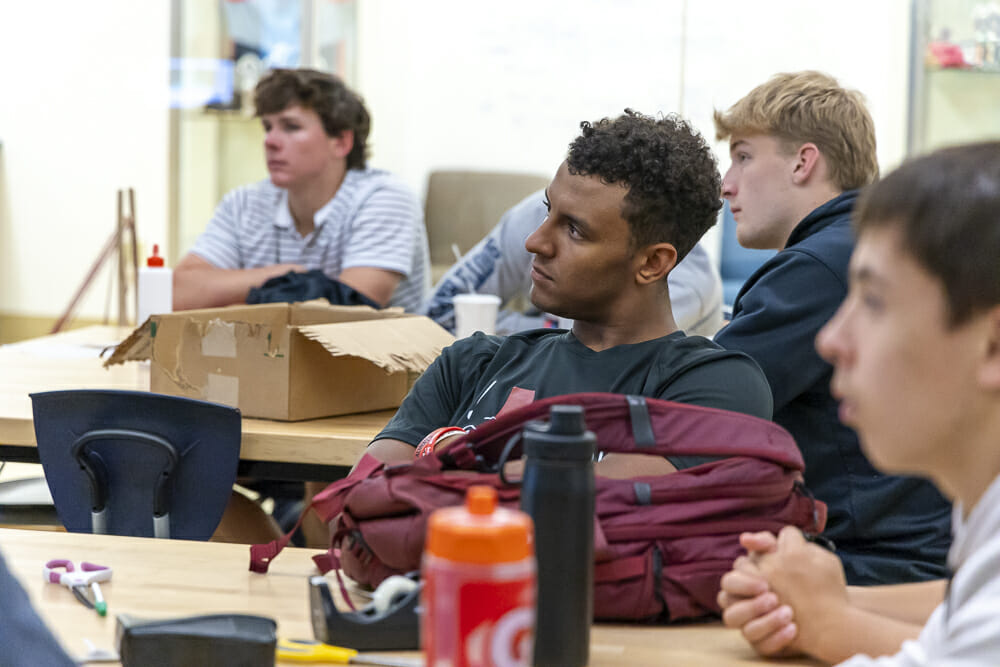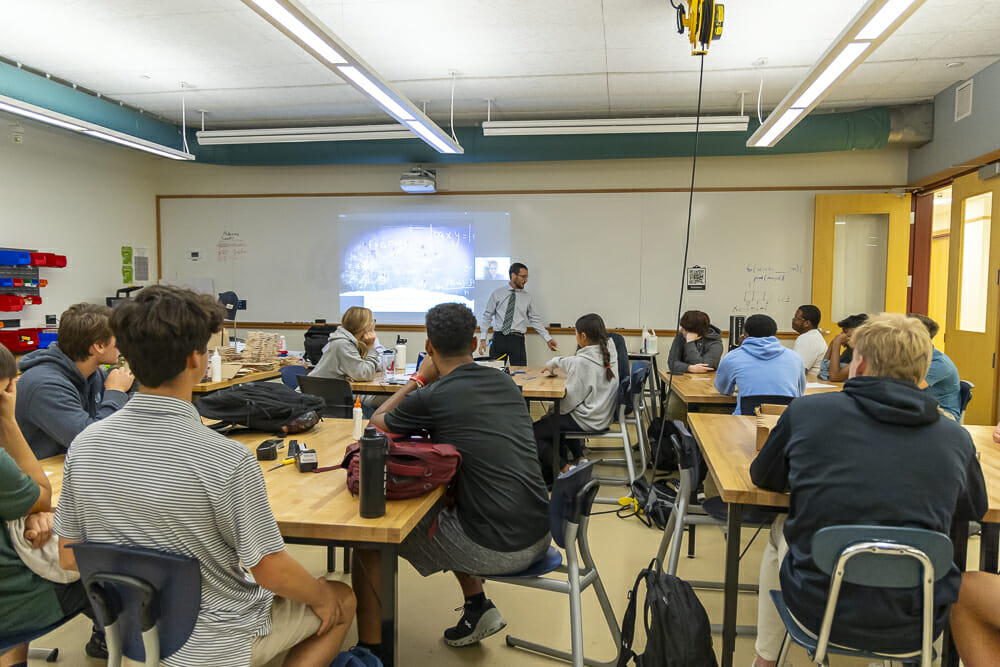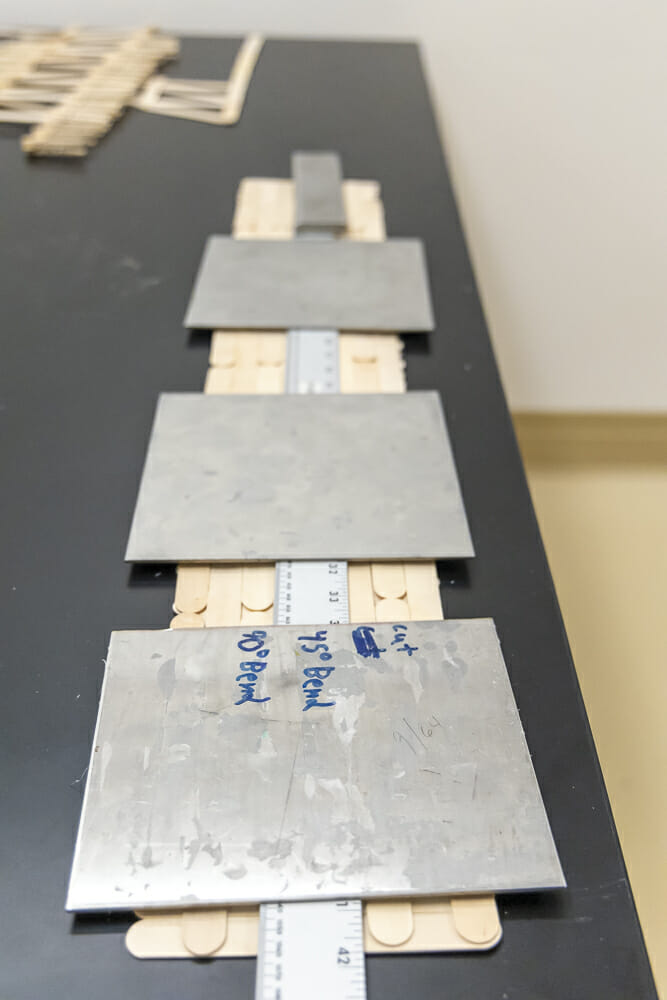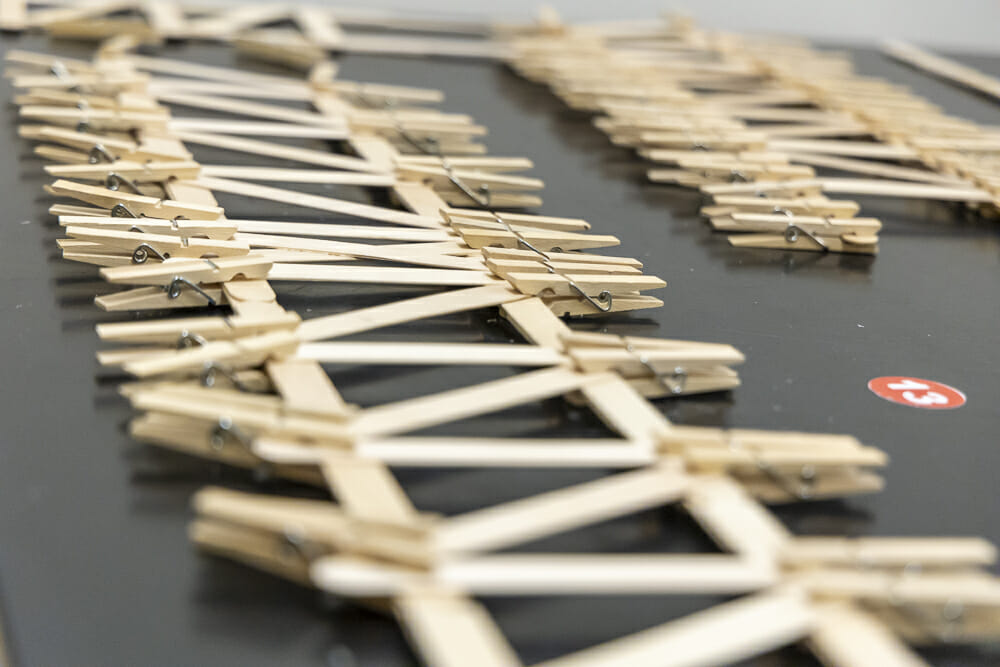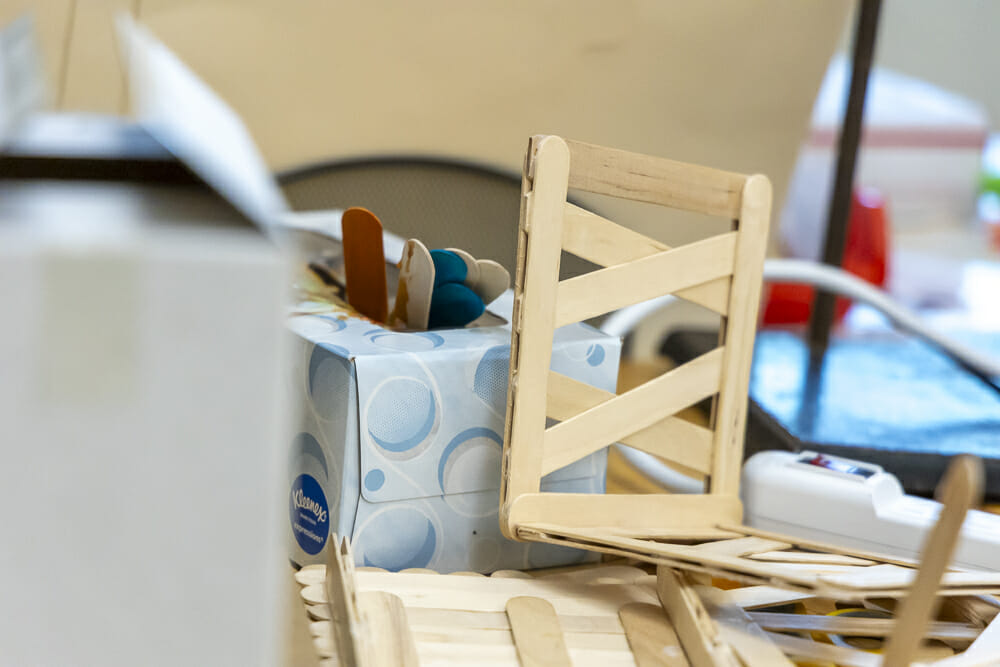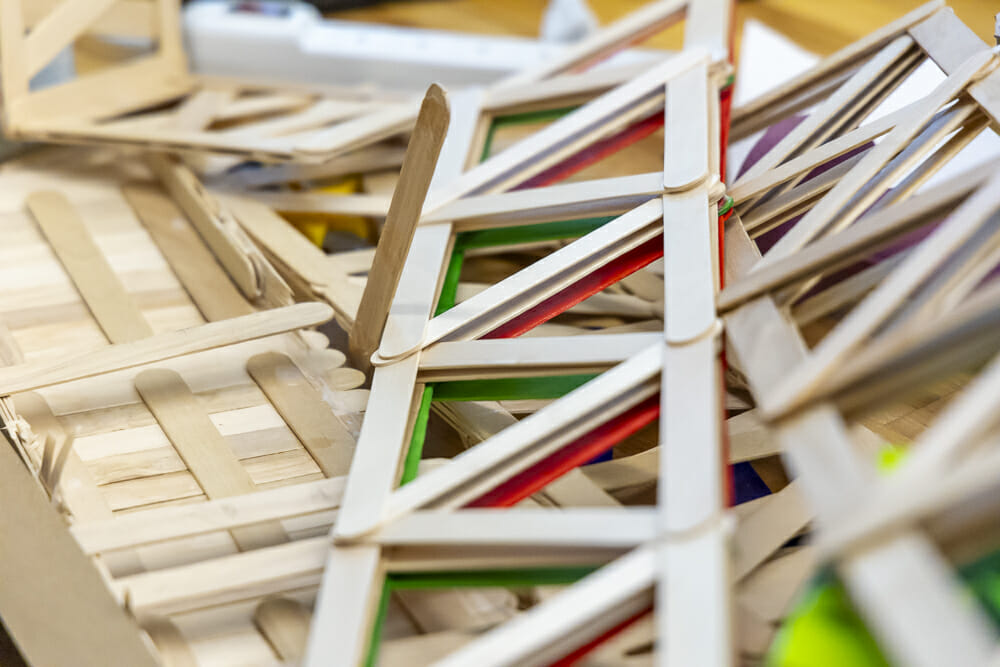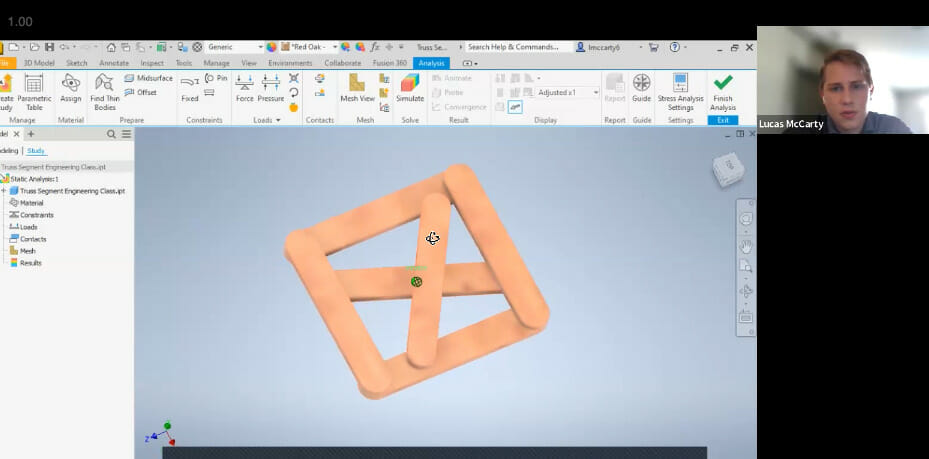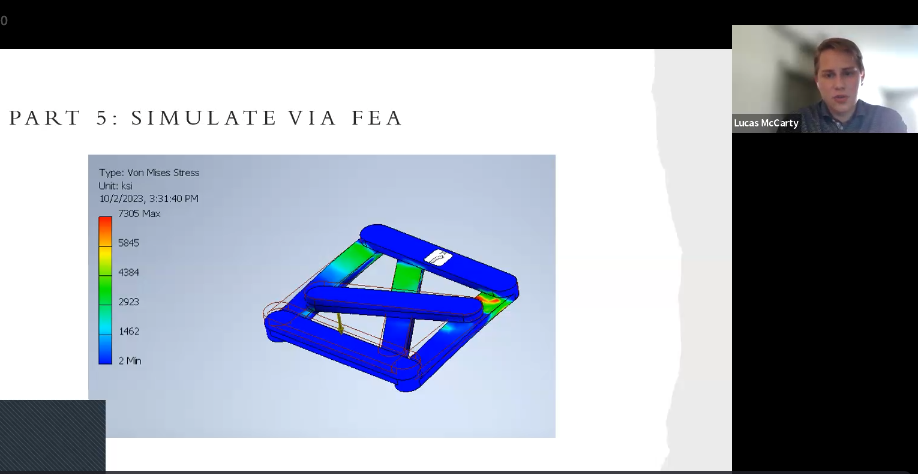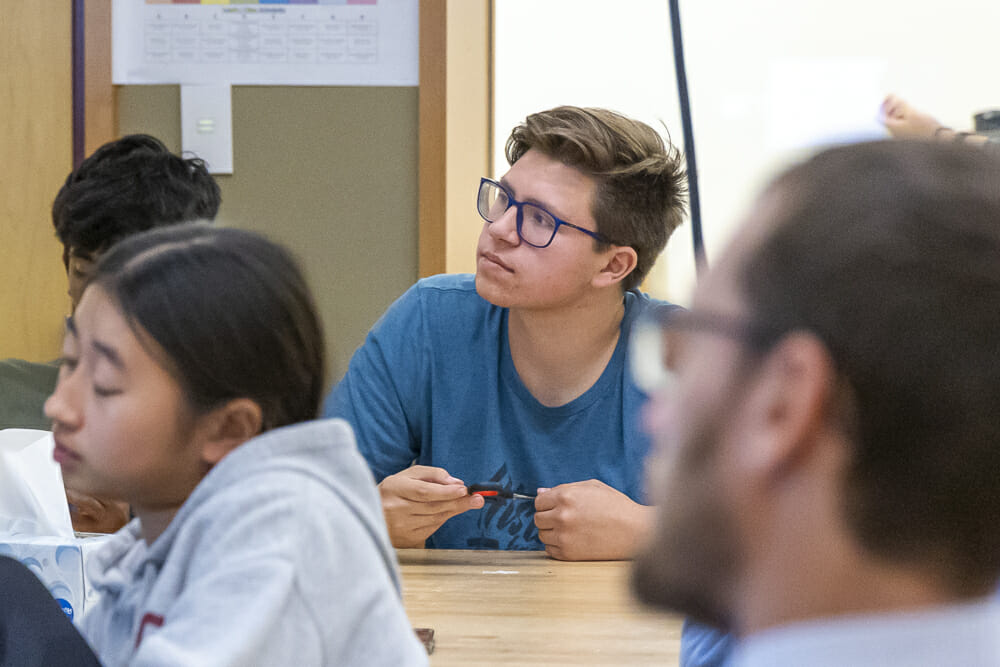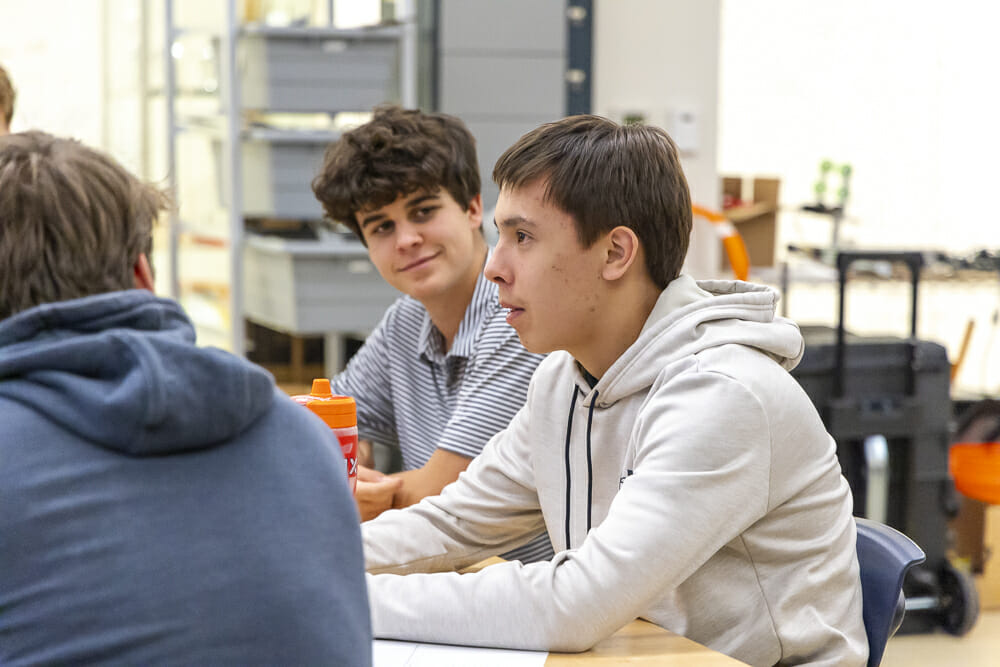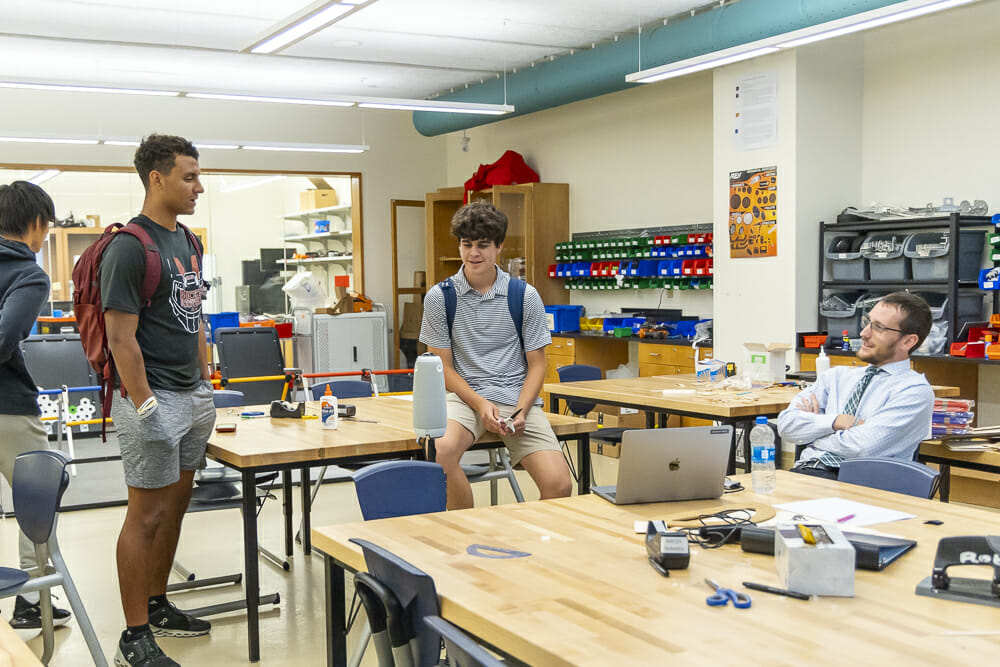Engineering students in Upper School Science Teacher Travis Menghini’s class recently enjoyed a visit with MICDS alum Lucas McCarty ’21, who, as a recent graduate, shared information about his transition as a student on an engineering path from high school to college.
Menghini said, «I had Lucas in class all four years of his Upper School experience. Throughout that time, I saw him grow as a student and a person. While in the Upper School, he took advantage of many programs offered on top of his personal projects, which directly led to his success being accepted to his top colleges. I was delighted that he was able to Zoom into my class and tell my engineering students about his experience so far in college and what has led to his success.»
While at MICDS, McCarty was involved in FTC robotics, cycling, and the Entrepreneurship and Programming Clubs. During the pandemic, he and some fellow classmates also launched MOtary Connections, a service to connect individuals wanting to register to vote with local notaries to notarize their absentee ballots.
McCarty is now a junior at Georgia Tech pursuing mechanical engineering, German, and computer science. Not someone to rest on his laurels, he is still involved in robotics, is part of a team that builds electric Formula One-style cars, and is currently an engineering intern for Siemens.
During his Zoom visit, he offered sage advice about finishing strong in high school, maximizing student opportunities, and applying that same effort and more in college. He shared how failure and critiques are critical for learning and building experience, as is the importance of surrounding yourself with people more intelligent than you.
The timing of the visit was perfect for the students in Menghini’s class. They are deep in a legendary project at MICDS: Popsicle Stick Bridges. The mission is to construct a strong, lightweight, one-of-a-kind bridge using only popsicle sticks, glue, and yarn. Before building begins, students must research, brainstorm, design, and execute a technical drawing, prepare a cost analysis, build, test, retest, redesign, and test again for a bridge that can hold upwards of 400 pounds.
McCarty to the rescue! At the end of his presentation, he took students through an engineering practice, beginning with the all-important effort of identifying the project’s scope. Engineers exist to help companies save time, materials, labor, and money, and protect projects from failure. So he walked students through one particular bridge truss, modeled it out, ran it through CAD software, and added a hypothetical math calculation and a finite element analysis (FEA) simulation of the impact of 500 lbs of force. FEA simulation is a computerized method for predicting how a product reacts to real-world forces, vibration, heat, fluid flow, and other physical effects. Then, the critical element is asking questions about errors made along the way, what could be done differently, and the importance of testing, failing, and learning.
Zoe Zlatic ’24 appreciated the opportunity to hear from someone who knows the rigors of MICDS and who is using practical knowledge of engineering in college. «As someone who is deciding which engineering discipline to pursue, I asked him a question about why he chose to major in mechanical engineering specifically, and his answer was phenomenal. Hearing about his personal experiences—college, extracurriculars, internships, and otherwise—helped shed some light on my own views of college engineering. One of my favorite parts of his presentation was the advice he gave us and the encouragement to keep working hard toward a career in engineering. I greatly appreciate the enthusiasm Lucas brought to the presentation, and I’m very thankful we got to hear from him,» she said.
McCarty was excited to add this mini-design lesson with Menghini’s students. «I have fond memories from that class from four years ago. My goal was to communicate the processes that engineering students utilize in college and beyond,» he said.
Questions from students to McCarty ranged from how to work with teams and why he chose mechanical engineering (it offers a wide range of skills—electrical, computer engineering, civil engineering, programming, industrial, etc.). McCarty’s goal for the visit was to share as much helpful advice as possible that he wished someone had told him before entering the engineering field. «It was a rewarding experience to speak about my involvements at MICDS and college. I hope that by sharing my own story, this group of MICDS students might gain insight and inspiration for their own college journeys.»
